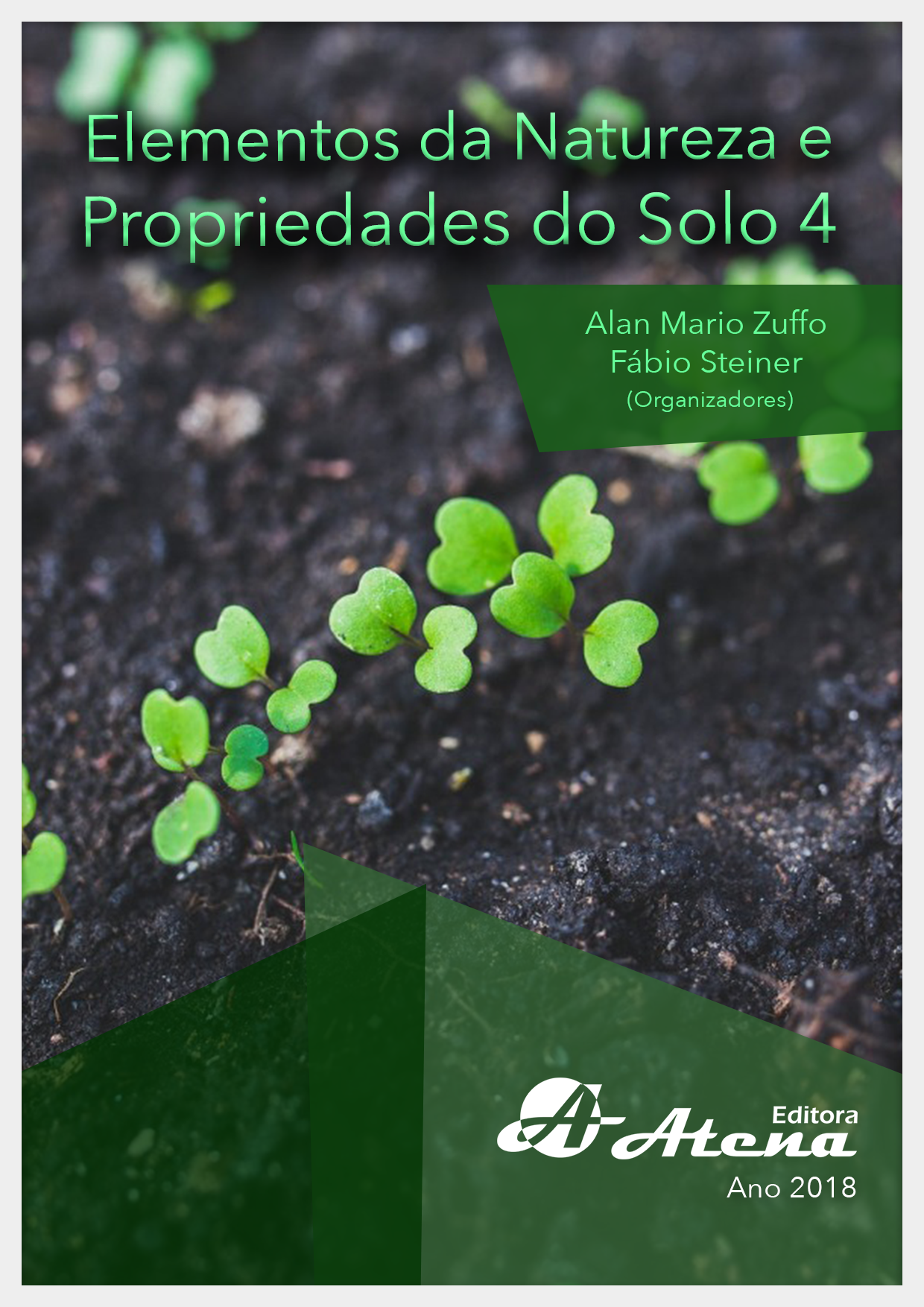
AVALIAÇÃO DOS COMPONENTES DE RENDIMENTO DO MILHO (Zea mays L.) EM SISTEMAS DE CULTIVO COM UTILIZAÇÃO DE ADUBAÇÃO BIOLÓGICA E BIOESTIMULANTE
The objective of this work was to evaluate the phytotechnical and yield parameters
of maize in cultivation systems with the use of biological fertilizer and biostimulant. The
study was conducted in a randomized complete block design in subdivided plots, in a 3x4
factorial scheme. The treatments were constituted by the interaction of factor 1 (cultivation
systems - main plot), being scarification in two consecutive years (ESC), scarification and
subsequent return to the no-tillage system (ESC + PD) and no-tillage system with more
than ten years (PD), and factor 2 (biological fertilization - subplot) constituted by the control
(TEST); Bacsol® 200g ha-1 (BAC); Orgasol® 200ml ha-1 (ORG); Bacsol® 200g ha-1 + Orgasol®
200ml ha-1 (BAC + ORG). Were analyzed: stem diameter (DC), ear insertion height (EIA), plant
height (EP), row of grain per spike (NFE), number of grains per row (NGF), number of grains
per spike (NG), dry mass of 1000 grains (MS1000G) and yield per hectare (REND). Data
were submitted to analysis of variance and Pearson correlation. Was not found difference in
relation to the BAC, ORG and BAC + ORG fertilizers; however, was an effect of the cultivation
systems on the responses of the use of the tested products. The ESC treatment presented
the worst results in 50% of the evaluated variables; with PD being 9% higher than the other
REND systems. NFG, NGF, NG and MS1000G and soil organic matter (OM), potassium (K),
soil density (Ds) and total porosity (Pt).
AVALIAÇÃO DOS COMPONENTES DE RENDIMENTO DO MILHO (Zea mays L.) EM SISTEMAS DE CULTIVO COM UTILIZAÇÃO DE ADUBAÇÃO BIOLÓGICA E BIOESTIMULANTE
-
DOI: Atena
-
Palavras-chave: Sustentabilidade, promotores de crescimento, sistema de cultivo mínimo, sistema plantio direto.
-
Keywords: Sustainability, growth promoters, minimum cropping system, no-till system
-
Abstract:
O trabalho objetivou avaliar parâmetros
fitotécnicos e de rendimento do milho em sistemas
de cultivo com utilização de adubação biológica
e bioestimulante. O estudo foi conduzido em
delineamento experimental de blocos casualizados
em parcelas subdivididas, em esquema fatorial
3x4. Os tratamentos foram constituídos pela
interação do fator 1 (sistemas de cultivo – parcela
principal) sendo eles escarificação em dois anos
consecutivos (ESC), escarificação e posterior
retorno ao sistema plantio direto a dois anos
(ESC+PD) e sistema plantio direto com mais
de dez anos (PD), e fator 2 (adubação biológica
– sub parcela) constituído pela testemunha
(TEST); Bacsol® 200g ha-1 (BAC); Orgasol® 200ml
ha-1 (ORG); Bacsol® 200g ha-1+Orgasol® 200ml
ha-1 (BAC+ORG). Foram analisados: diâmetro de
colmo (DC), altura de inserção de espiga (AIE),
estatura de planta (EP), fileira de grãos por espiga
(NFE), número de grãos por fileira (NGF), número
de grãos por espiga (NG), massa seca de 1000
grãos (MS1000G) e rendimento por hectare
(REND). Os dados obtidos foram submetidos à
análise de variância e correlação de Pearson.
Não houve diferença em relação aos adubos
BAC, ORG e BAC+ORG; entretanto, houve efeito
dos sistemas de cultivo sobre as respostas da
utilização dos produtos testados. O tratamento
ESC apresentou os piores resultados em 50% das
variáveis avaliadas; sendo que o PD apresentouse 9% superior em relação aos demais sistemas
para REND. Obteve-se correlação positiva entre as
variáveis de rendimento NFG, NGF, NG e MS1000G
e matéria orgânica do solo (MO), potássio (K),
densidade do solo (Ds) e porosidade total (Pt)
-
Número de páginas: 15
- Elston Kraft


